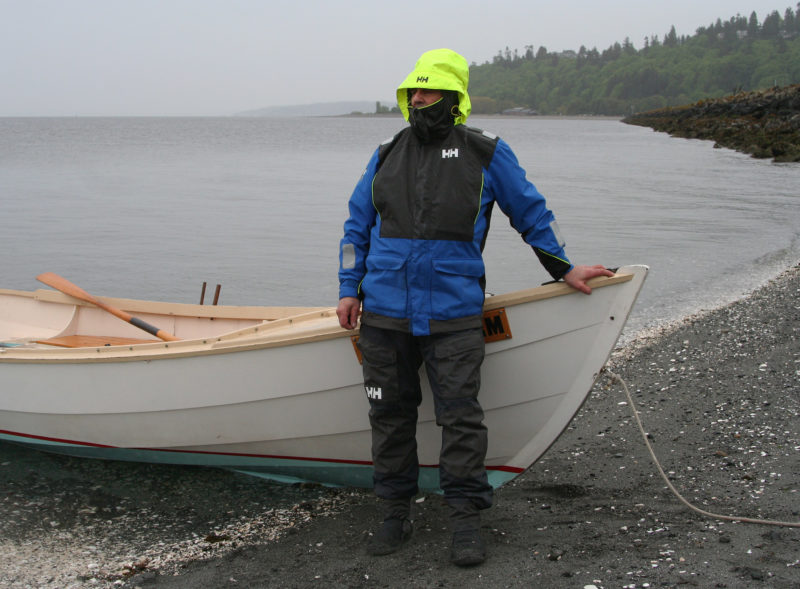 photographs by the author
photographs by the author.
Back in the ’70s, I used to make some of my own raingear, at first using coated nylon, then switching to Gore-Tex when it was introduced in the last half of that decade. The early versions of the waterproof, breathable fabric didn’t keep me dry in a prolonged downpour, so I often wore a yellow Helly Hansen slicker over my Gore-Tex jacket. More than three decades later I still have that slicker, and with the exception of two very small tears, it is still a great raincoat.
As much as I relied upon that old standby in the wettest weather, it was high time to see what Helly Hansen is making now. So, during this especially rainy spring here in Seattle, I’ve been wearing Helly Hansen’s Newport Coastal Jacket and Newport Pant. The shells of both are made of “Helly Tech,” Helly Hansen’s breathable waterproof fabric. All the seams are sealed with transparent tape fused to the fabric. Both garments were completely waterproof.
The pant legs were just barely large enough to be coaxed over my size-13 shoes and mukluks, but the mesh and light nylon fabric lining got hung up on the toes and heels. It may be easier to pull the pants over smaller footwear, but for me it was best to slip the rain pants on over my stocking feet or do as firemen do—slip the pant legs over the boot tops before putting the boots on. Velcro cinches at the cuffs to hold them tight around the ankles and keep the fabric from getting under heels. More Velcro cinches at the waist keep the pants in place just as a belt would.
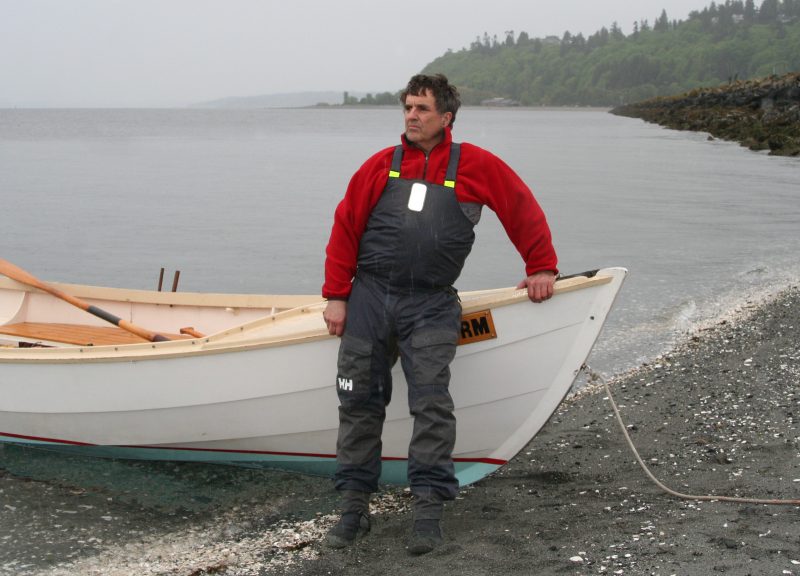
The high bib provided an extra layer of warmth around my core.
Because the pants don’t just hang from the suspenders, it was easier to sit or crouch. The pockets, one over each thigh, were a whole lot easier to access, especially when sitting, than conventional pockets located closer to the waist. Patches on the seat, knees, and cuffs reinforce the areas of greatest wear. The zipper is long and protected in front by a Velcro-lined flap and in back by a large gusset. The gusset provided extra warmth and was loose enough to be pulled out of the way to get to the fly of base-layer pants.
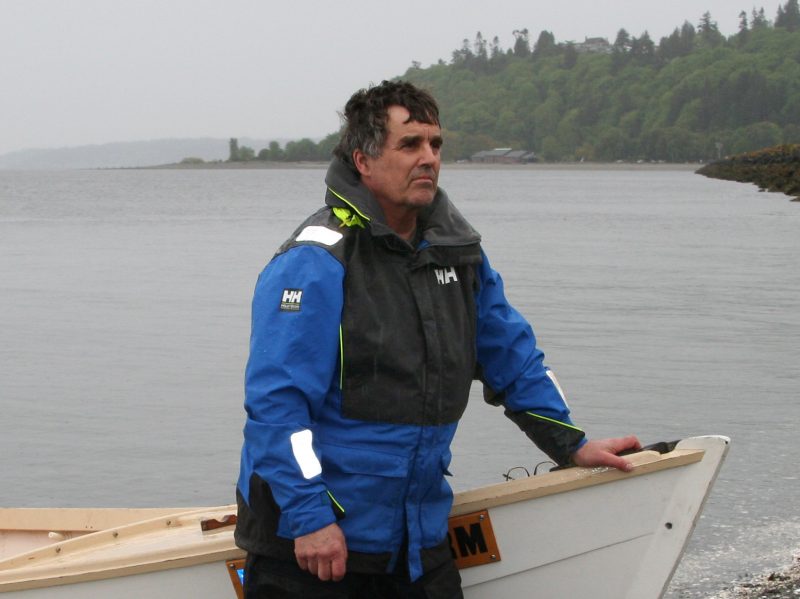
The high, fleece-lined collar protects the neck and conceals the hood.
The jacket has a high collar with fleece on the inside. When the front zipper was all the way up, the fleece wrapped around my neck and came up to my nose. It was toasty-warm. The hood tucked inside the collar is made of a highly visible breathable/waterproof fabric and has a mesh liner. An adjustable elastic cord at the back pulls the sides of the hood back for a wider field of view, and another cord around the face opening tightens the fit to keep out wind-driven spray and rain. The hood moved with me so I had good visibility when looking over my shoulder while rowing. Quite by accident, I discovered that the collar itself can be inverted to become a second inner hood for extra warmth.
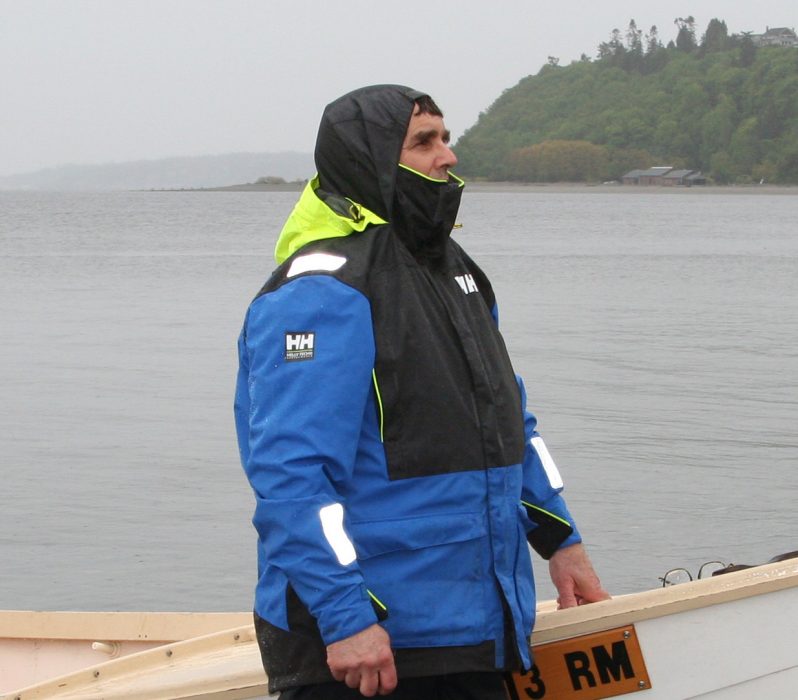
The collar wasn’t designed to serve as an inner hood, but it fit well when inverted and was especially warm.
Each wrist cuff has an inner layer of stretchy rubberized fabric that created a seal to keep water out when I was reaching overhead. The protective outer cuff could be tightened up to keep it clear of my hands while I was working, or loosened so I could pull my hands in out of the wind. Both cuffs are adjustable with Velcro patches that will accommodate a wide range of wrist sizes.
The jacket has two waist-height pockets with top-loading cargo pockets that have beneath them side-opening hand-warming pockets with fleece linings. The side-opening breast pockets are also lined for warmth.
There are SOLAS retroreflective patches on the shoulders, on the forearms, and at the top front of the pants bib (which are covered up when wearing the coat). Both the jacket and pants have loops for hanging on a hook to drip-dry. The loop on the back of the pants is at waist level, which is great for hanging on lower hooks.
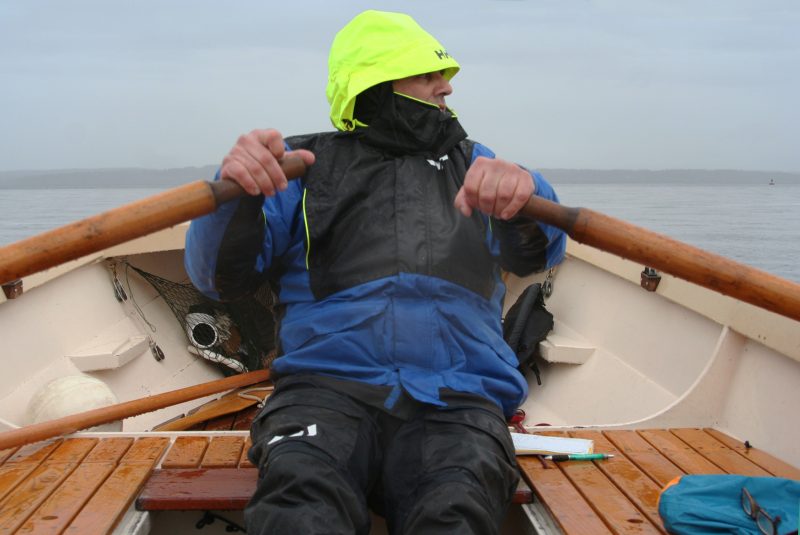
The hood moved with my head so my view wasn’t cut off when I looked over my shoulder.
When I’ve taken the Newport jacket and pants out rowing in the rain, they’ve kept me dry, and got only a bit clammy, not sweaty, inside when I was rowing hard. The jacket offered nothing to snag while I was rowing, and none of the Velcro’s prickly hook side came in contact with my skin.
Some of my rainy-day chores around the house were as good as any to test the cuffs. During thunderstorms, tending to plastic tarps over the four boats I have in the yard is always good for getting a bit soggy. I also unclogged a downspout, the part that angles under the eaves from the gutter to the side of the house, which guarantees a good soaking. Working overhead on the downspout usually makes a funnel out of an ordinary coat sleeve, but the inner cuffs only let a trickle run down to my elbow. The sleeve’s liner absorbed the water, and a few minutes after I’d cleared the downspout, the breathable outer shell had allowed the moisture out and I was dry again.
I’m in no hurry to retire my old yellow Helly Hanson slicker—I have a shot at getting a half century of use out of it—but for boating, it was clear that the modern materials and design that Helly Hansen put into the Newport jacket and pants are a quantum leap forward in protection, utility, and comfort.![]()
Christopher Cunningham is the editor of Small Boats Monthly.
The Newport Jacket, $300, and Newport Pant, $200, are available from Helly Hansen and numerous retailers.
Is there a product that might be useful for boatbuilding, cruising or shore-side camping that you’d like us to review? Please email your suggestions.
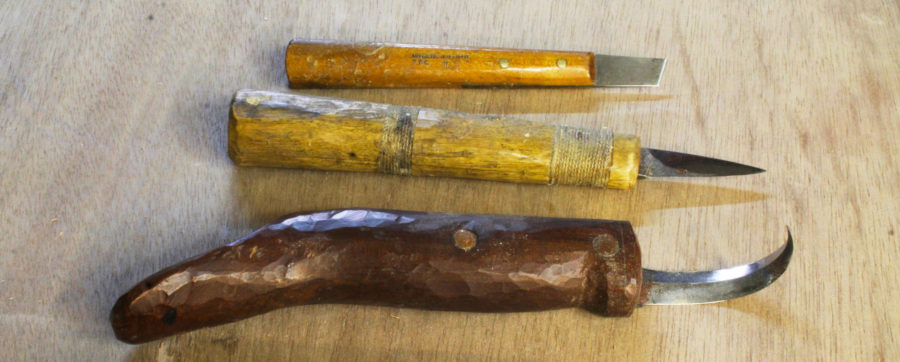
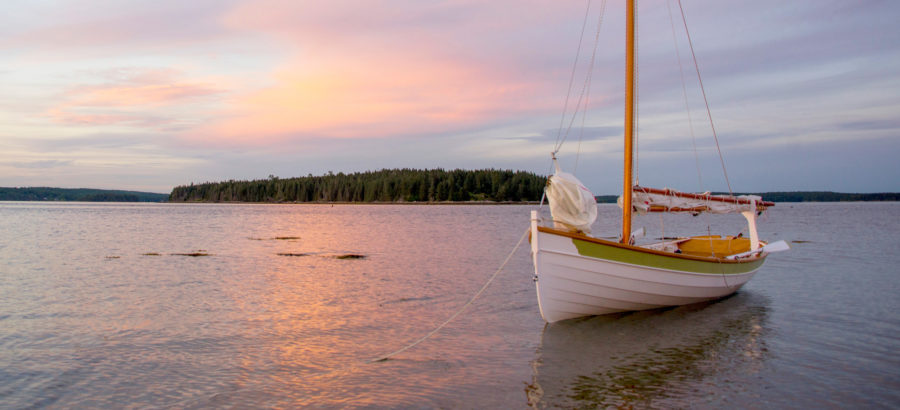
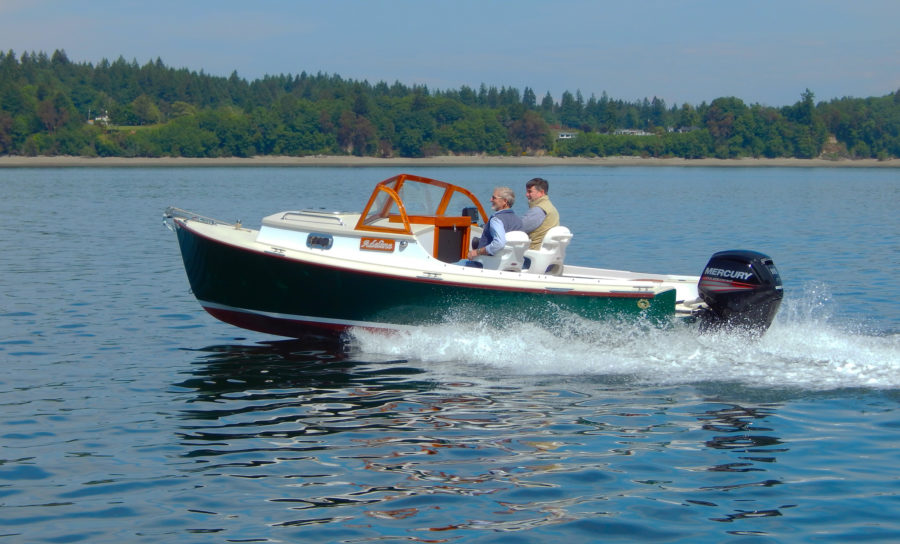
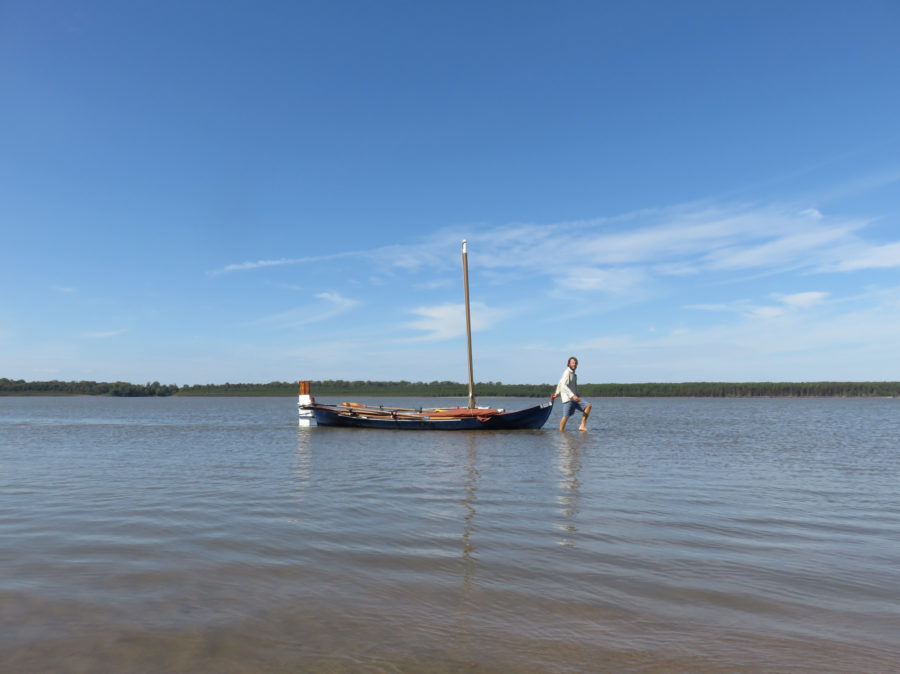
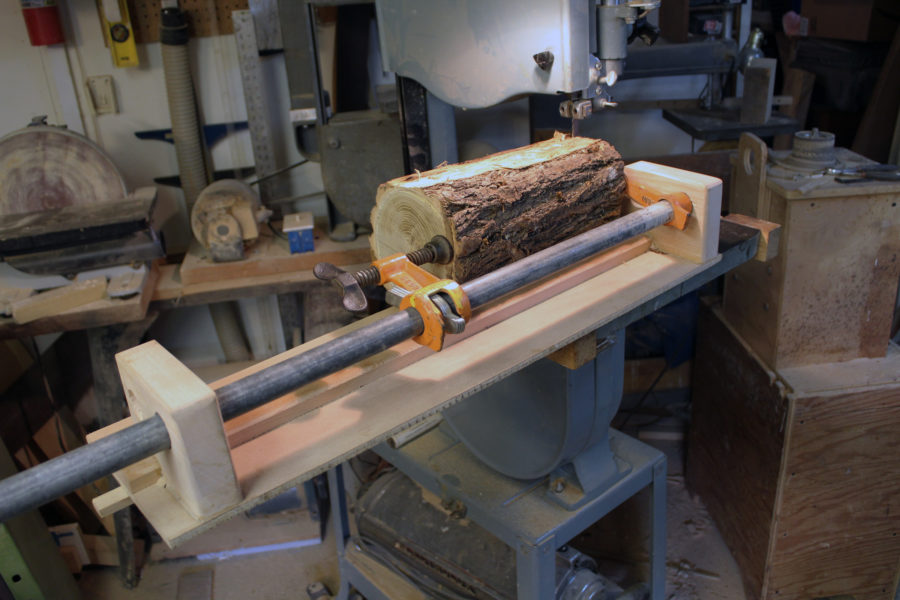
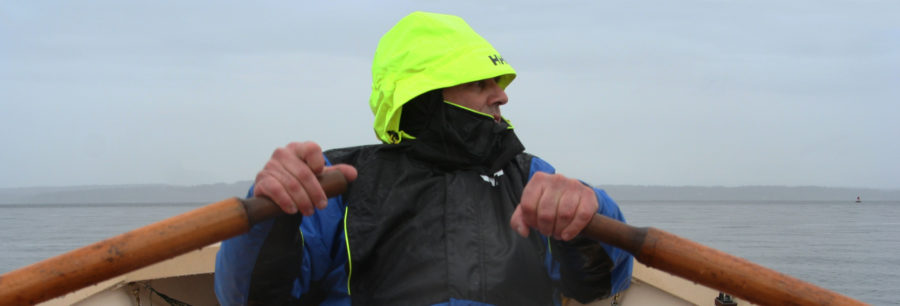
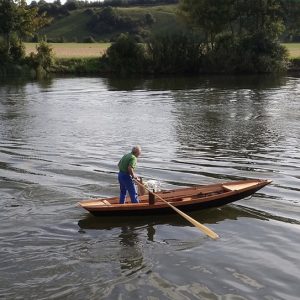
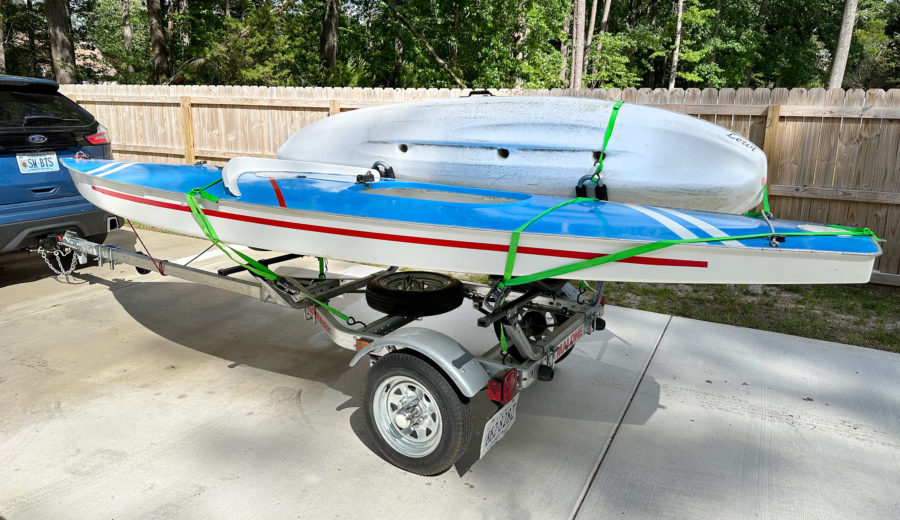
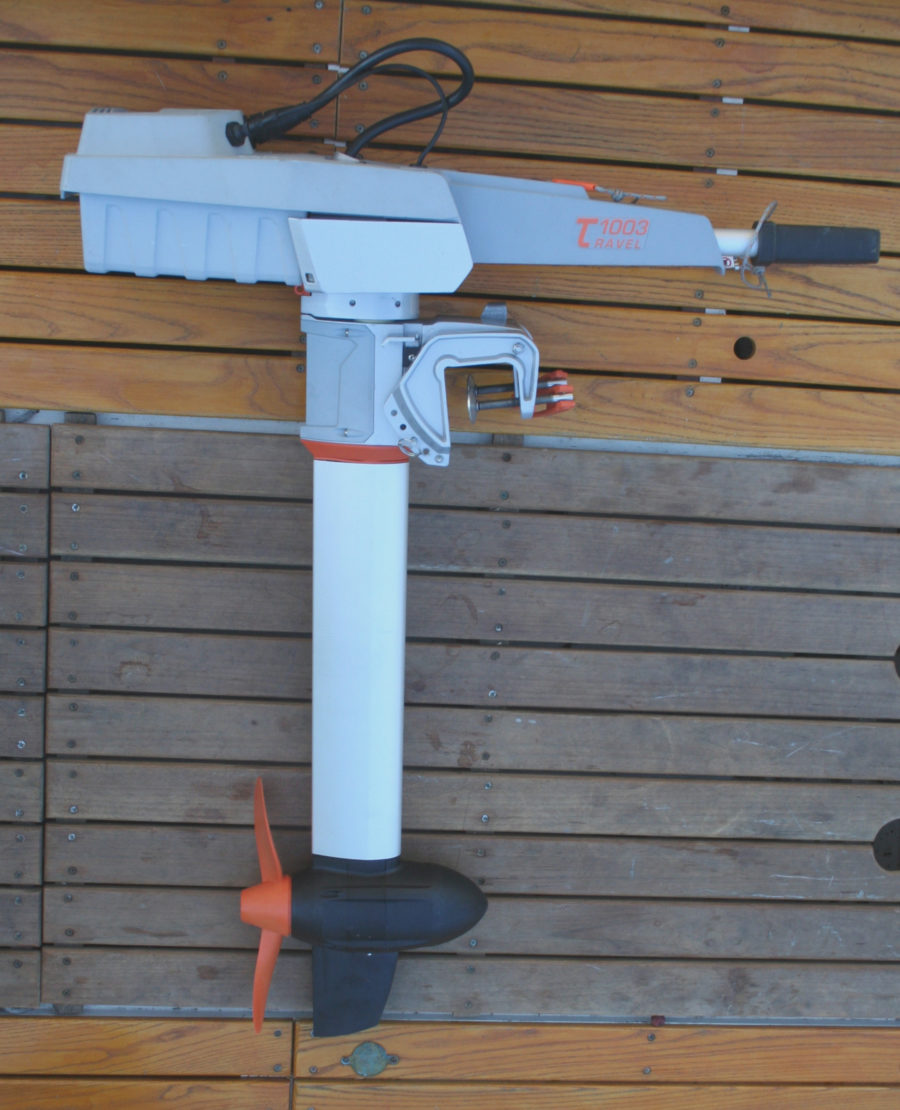
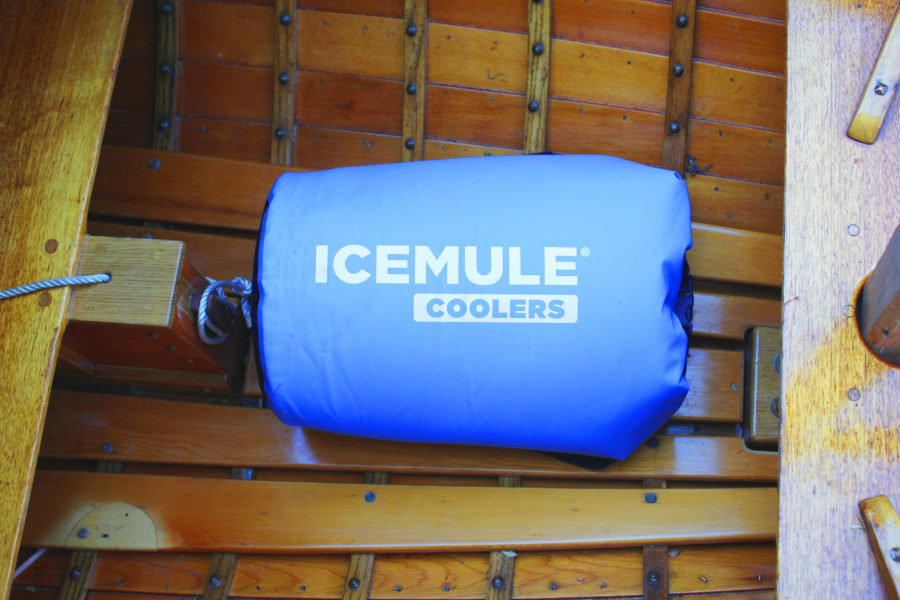
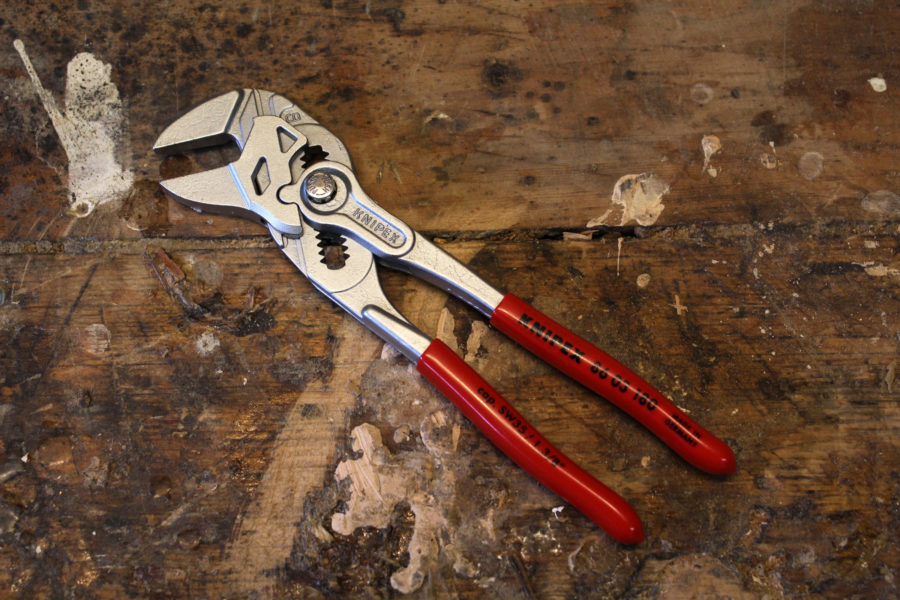
Is there a light and heavy version? Obviously you’re testing the heavy version. If I was still living in San Francisco that’s what I would be using, however, I live in Florida now so I would be interested in a light weight or tropical version.
Helly Hansen offers a wide range of jackets and pants. You might consider the HP Fjord jacket and the Pier 2 Pants.
Maybe a dumb question, but would this suffice for a Survival Suit as worn by R2AKers [Race to Alasak]? Are they sized for short stocky men like 5’6″ and 175 lbs?
This rain gear is not designed for use a survival suit. It does not prevent the ingress of water nor provide flotation. Helly Hansen’s web site includes a sizing chart to check for fit. There are many versions cut and sized for women as well.
That’s a pretty large-looking rowboat. What design ?
That’s a Caledonia yawl, designed by Iain Oughtred. I built it in 2005.